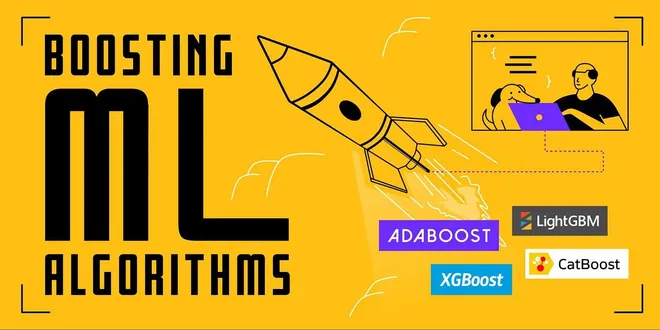Discover the best resources to learn about AI & Software Engineering - With AI⚡️Tutoring
Boosting
Boosting is an ensemble meta-algorithm designed to enhance the performance of machine learning models by combining multiple weak learners to create a strong learner. It works by sequentially training models, where each new model focuses on correcting the errors made by its predecessor. This iterative process allows boosting to reduce both bias and variance, leading to improved accuracy in predictions. Common boosting algorithms include AdaBoost, Gradient Boosting, and XGBoost, which have gained popularity due to their effectiveness in various applications, making them a go-to choice for many data scientists and machine learning practitioners.

Clearing air around “Boosting”
Boosting is an ensemble meta-algorithm primarily for reducing bias and variance in supervised learning.
📚 Read more at Towards Data Science🔎 Find similar documents

The Ultimate Beginner Guide to Boosting
Boosting is a meta-algorithm from the ensemble learning paradigm where multiple models (often termed “weak learners”) are trained to solve the same problem and combined to get better results. This…
📚 Read more at Towards Data Science🔎 Find similar documents

Boost your grasp on boosting
The popularization of boosting has been a major breakthrough in applied machine learning. Inherently easy to implement thanks to multiple software packages while achieving high performance on many…
📚 Read more at Towards Data Science🔎 Find similar documents

Why Boosting Works
Gradient boosting is one of the most effective ML techniques out there. In this post I take a look at why boosting works. TL;DL Boosting corrects the mistakes of previous learners by fitting patterns…...
📚 Read more at Towards Data Science🔎 Find similar documents

Boosting Trees and AdaBoost: An Introduction
Boosting is an iterative assembly mechanism in which models are trained one after the other. These models are referred to as “poor learners” because they are basic prediction rules that only…
📚 Read more at Analytics Vidhya🔎 Find similar documents

Demystifying Maths of Gradient Boosting
Boosting is an ensemble learning technique. Conceptually, these techniques involve: 1. learning base learners; 2. using all of the models to come to a final prediction. Ensemble learning techniques…
📚 Read more at Towards Data Science🔎 Find similar documents

Understanding gradient boosting from scratch with a small dataset
Boosting is a very popular ensemble technique in which we combine many weak learners to transform them into a strong learner. Boosting is a sequential operation in which we build weak learners in…
📚 Read more at Towards Data Science🔎 Find similar documents

Types of Boosting Algorithms in Machine Learning
Photo by Derrick Mwiti on KDnuggets The combination of several machine learning algorithms is referred to as ensemble learning. Boosting is an ensemble learning technique in machine learning where mul...
📚 Read more at Python in Plain English🔎 Find similar documents

Introduction To Gradient Boosting Classification
Boosting is an ensemble method that combines several weak learners into a strong learner sequentially. In boosting methods, we train the predictors sequentially, each trying to correct its…
📚 Read more at Analytics Vidhya🔎 Find similar documents

Improve Your Boosting Algorithms with Early Stopping
Boosting algorithms are largely popular in the data science space, and rightly so. Models that incorporate boosting yield some of the best performances, which is why they are commonplace in both…
📚 Read more at Towards Data Science🔎 Find similar documents

Boosting in Machine Learning and the Implementation of XGBoost in Python
As an extension of my previous article outlining Ensemble Methods, this blog will dive into Boosting and all it entails. In its simplest form, Boosting is an ensemble strategy thats consecutively…
📚 Read more at Towards Data Science🔎 Find similar documents

Strong(er) Gradient Boosting
AI-generated image (craiyon) The idea of boosting in machine learning is based on the question posed by Michael Kearns and Leslie Valiant in 1988/89: “Can a set of weak learners create a single strong...
📚 Read more at Towards AI🔎 Find similar documents

